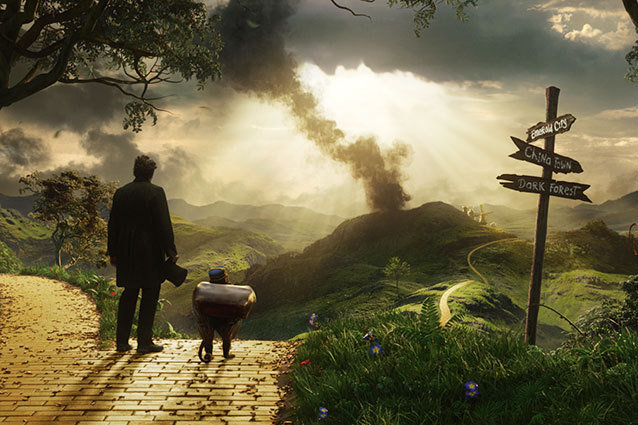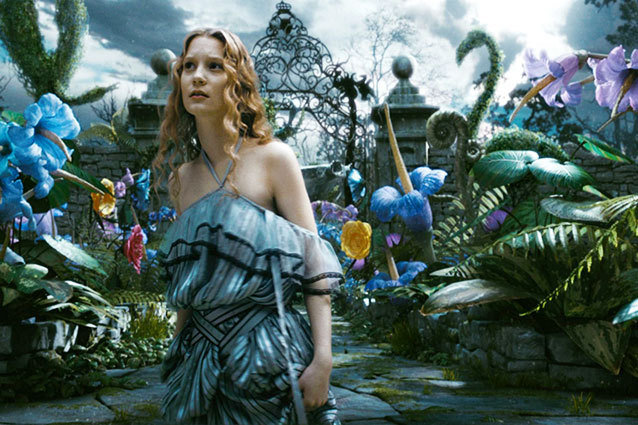
As 2012 dawned, there was one movie that geek culture anticipated above all others: The Dark Knight Rises. It was the trilogy-capping follow-up to, at that point, the most successful superhero movie of all time. The Dark Knight was a major cultural touchstone that, with its cracked-mirror reflection of a society ripped apart by terrorism, complex questions about surveillance, and dark neo-noir style, legitimized the idea that comic books could be fodder for serious cinematic art. And yet, when 2012 ended, its sequel had not walked off as the year’s highest-grossing film. That honor went to another superhero flick with a decidedly lighter-hearted tone, glossier visuals, and a mission statement to have popcorn fun rather than strive to be pop art: The Avengers. In fact, The Avengers not only beat The Dark Knight Rises for the No. 1 spot, it did so by a margin of about $175 million.
Now, we’re not saying that Christopher Nolan’s gritty comic-book movie revolution, nor Peter Jackson’s dirt-under-the-fingernails overhaul of fantasy, is by any means over. What is happening, though, is that audiences are starting to direct the question asked by Nolan’s most famous Batman character back on blockbuster filmmaking as a whole: Why so serious?
RELATED: Dr. Oz the Great and Powerful!—TV’s Doc Travels to Magical Land
After a decade of action, sci-fi, and comic book movies striving for a darker, grittier, more down-to-earth aesthetic — and filmmakers equating such qualities with being taken seriously — escapism is making a loud-and-proud comeback. Audiences are responding to movies that just want to have fun in a big way. In 2010, Alice in Wonderland, with its candy-colored visuals and cheeky Tim Burton wit, grossed $334.2 million in the U.S. alone. Later that year Disney scored its biggest non-Pixar animated hit in years with the $200 million-grossing Tangled, proving what a huge market there still is for bubbly princess fare. And while Bryan Singer’s Jacksonian “dirt under the fingernails” take on Jack and the Beanstalk with Jack the Giant Slayer failed to deliver blockbuster numbers with a tepid $27.2 million opening, early tracking for Oz the Great and Powerful, a decidedly more glossy, color-splashed fairy tale, suggests that film may take in $80 million or more during its first weekend. (It’s not a coincidence that Disney produced Alice, Tangled, Oz, and The Avengers.) The message is clear: there is an audience that wants fun for fun’s sake. Escapism is back.
RELATED: ‘Oz the Great and Powerful’ is Not Your Grandma’s ‘Wizard of Oz’
Just five years ago, “dark,” “brooding,” and “gritty” was the way to go if you wanted your tentpole movie to be taken seriously — and make a lot of money. The kid-friendly Fantastic Four movies tanked. Superman Returns’ shiny Americana seemed terribly unfashionable and out-of-date. Spider-Man 3 made a ton of money off the strength of its predecessors, but the fact that its sole attempt at going dark and brooding was to give Tobey Maguire some emo bangs earned the film geek derision and scorn from the same critics who praised the Sam Raimi franchise’s first two installments. The Dark Knight, though, had the ambition to transform iconic Batman villain the Joker into a terrorist spreading urban chaos. Casino Royale turned James Bond into a blunt instrument who was also vulnerable and capable of nursing a broken heart. And the Bourne movies deconstructed the panoptic dread inherent in spy fiction by serving up a title character who was a blank slate at the mercy of forces beyond his control. Bond, Bourne, and Nolan’s Batman presented heroes affected with a kind of PTSD, still tormented by past traumas and regrets, and tending toward a messianic relentlessness to make things right. And then there’s The Lord of the Rings, about a legion of bathing-averse heroes suffering incredible hardship to stare down insensate evil. None of these movies featured traditionally “fun” characters or storylines, and yet they became among the most popular, crowd-pleasing entertainments of the past decade.
Try as journalists, publicists, and film scholars might, it’s impossible to disentangle directorial vision, marketing impulses, and audience demand to figure what exactly is responsible for a trend like the dark blockbusters that dominated the multiplexes for much of the past decade. The rote answer is that these films are a cinematic response to 9/11 and are in some way allegorical reflections of the uncertainty, powerlessness, and trauma of that terrible day. Suddenly, Timothy Dalton’s brutish, scowling 007, so derided by Reagan Era movie audiences, was reincarnated as Daniel Craig’s brutish, scowling 007, and post-9/11 audiences loved it.
RELATED: ‘Pacific Rim’: Is It More Than Just Robots Fighting Aliens?—TRAILER
If blockbuster filmmaking ever since Star Wars has pivoted around two central themes — “With great power comes great responsibility” and also “He who fights monsters must take care that he doesn’t become a monster himself” — after 9/11 the latter theme seemed to preoccupy the most successful sci-fi/fantasy and superhero movie filmmakers. This has been a unique phenomenon in Hollywood history. In the 1930s, also a time of great trauma because of the Great Depression and the rise of fascism, American movie audiences flocked to champagne-fizzy Astaire/Rogers musicals and kaleidoscopic Busby Berkeley spectacles to escape from a harsh reality. Even in the ‘70s, the era of Vietnam and Watergate, films that held up a darkly-tinted mirror to society were personal works of auteur-driven cinema, like Taxi Driver and Dog Day Afternoon — very different from the classical blockbuster escapism of The Godfather, The Sting, Jaws, and Star Wars. So the idea that people would go to a Batman movie like The Dark Knight to find an allegorical expression of real life fears — even catharsis for them — is unique.
But then in 2008, Marvel struck back at the darkness. Oddly enough, they gave us a character very much like Batman — a billionaire at the head of a company that makes weapons who applies his company’s tech to gadgets that transform him into a superhero. Yep, Iron Man. But unlike Christian Bale’s Bruce Wayne, Robert Downey Jr.’s Tony Stark wasn’t scarred by tragedy. In fact, you could argue that Stark only becomes a true superhero as Iron Man not when he builds the metallic suit but when he stops being an asshole and decides to use his fortune and genius for good. With Iron Man — and to some degree even more so with 2011’s Thor — Marvel offered up pop entertainment built around personalities rather than traumatic circumstances. Tony Stark and Thor struggle to overcome their natural arrogance and hubris. Then, and only then, do they truly become superheroes. In essence, Iron Man shifted comic book cinema’s storytelling priority away from “He who fights monsters must take care that he doesn’t become a monster himself” back to Spider-Man’s old “With great power comes great responsibility.” That meant a lighter tone, more humor, and, not surprisingly, more color-saturated visuals.
NEXT: “Dark” and “brooding” may be cool, but lighthearted escapism — call it the Bubblegum Blockbuster — is enduringly profitable.

The “Dark Blockbuster” aesthetic was decidedly monochromatic. The Bourne Ultimatum and The Dark Knight aren’t just dark thematically, they’re dark visually too. The color palette of those movies is very minimalistic — a lot of metallic blues and grays. By contrast, the post-Iron Man Marvel superhero films are bright and pop with bold, primary-colored panache. Outside of Marvel, the one-two punch of Star Trek and Avatar in 2009 also represented a stark shift in blockbuster storytelling priorities. Those were films about exploration and self-discovery more than they were about toil and strife. Sure, some terrible things happen in those movies. But they’re mostly about characters developing hidden potential while discovering new wonders. And those exploratory themes need a visual style that immediately communicates you’re in for not just a movie but an experience. So you get 3D, performance capture, heavily-CGI’d environments, and otherworldly lighting like the Thomas Kinkade glow that suffuses Avatar’s phosphorescent jungle moon Pandora.
It’s been argued that most stories in one way or another have roots charting back to The Iliad, and are about struggle and conflict, or The Odyssey, and are about discovery. Well, the latter is making a comeback with a vengeance. Movies like Iron Man, Star Trek, and Avatar are escapism in its purest form, but that doesn’t mean they’re devoid of real-life issues and concerns that many, many people understand. By no means is escapism inherently mindless. It’s the mode of storytelling that’s given us a farmboy staring at his planet’s twin suns and wondering what he’s made of, or a Kansas farmgirl singing about what lies “Over the Rainbow,” and it’s the basis for just about every Disney movie ever made. Those are themes everyone who’s ever grown up, or is growing up, can relate to. Even the escapism of the Astaire/Rogers musicals of the 1930s was deeply rooted in the hopes, dreams, and aspirations of the American viewing public that bought tickets.
RELATED: Ang Lee & ‘Life of Pi’ Editor on VFX Protests
What we have now, to put into film industry terms, is escapism with four-quadrant appeal. Combine themes everyone can relate to with stories people are already familiar with and you’ve got box office gold. That’s why Alice in Wonderland, despite tepid reviews, still grossed a fortune. As did Tangled. And so will probably Oz the Great and Powerful. Not to mention that the decidedly kid-friendlyThe Hobbit: An Unexpected Journey, which is very much the Odyssey to The Lord of the Rings’ Iliad, just crossed the $1 billion worldwide box office mark. As the President of Hollywood.com Box Office Paul Dergerabedian puts it, “Simply put, these films offer something for everyone: the action fans, the date crowd, fanboys and even families can enjoy these movies on many different levels and yet not be scared away by an R-rating or a cinematic vision that is purposefully dark and gritty.”
Call it the “bubblegum blockbuster,” a type of genre-spanning Hollywood movie that’s existed for a long, long time, from The Thief of Bagdad to The Sound of Music to The Avengers. Bubblegum blockbusters are not often considered to be all that cool, per se. The Amazing Spider-Man deliberately avoided anything as silly as Willem Dafoe’s Green Goblin Power Ranger mask from Sam Raimi’s 2002 Spider-Man movie. But for all the emphasis placed on The Amazing Spider-Man being a “more serious” take on the webslinging hero and all the fanboy discontent with how Raimi’s trilogy ended, which Spidey origin story ended up making more of the green stuff? Hands down Raimi’s bubblegum Spider-Man from 2002, which grossed $403 million to The Amazing Spider-Man’s $262 million.
“No question that ‘darker and grittier’ plays well with audiences too,” Dergerabedian adds. “One needs only look at the success of the Batman trilogy under the direction of Chris Nolan to realize this. However, unlike its darker-themed brethren, the bubblegum blockbuster has all the elements in place to make it an easier sell with general audiences and thus may provide an easier route to success.” Though perhaps not conceived as a tentpole movie the way some of these other films were, Life of Pi also follows this model: strong archetypal themes, a coming-of-age hook, and eye-candy visuals. Hello, PG rating and $600 million worldwide box office. Not to mention that Guillermo del Toro’s Pacific Rim, a shiny modern-day update on ‘50s monster movies, is already being positioned — like these other movies — as an adventure, a journey, and, above all, an experience, rather than a tightly-coiled drama.
Bubblegum might not be cool, but it sure is tasty…and profitable.
Follow Christian Blauvelt on Twitter @Ctblauvelt
[Photo Credit: Walt Disney Pictures(2)]
From Our Partners: 40 Most Revealing See-Through Red Carpet Looks (Vh1)
40 Most Revealing See-Through Red Carpet Looks (Vh1) 15 Stars Share Secrets of their Sex Lives (Celebuzz)
15 Stars Share Secrets of their Sex Lives (Celebuzz)


